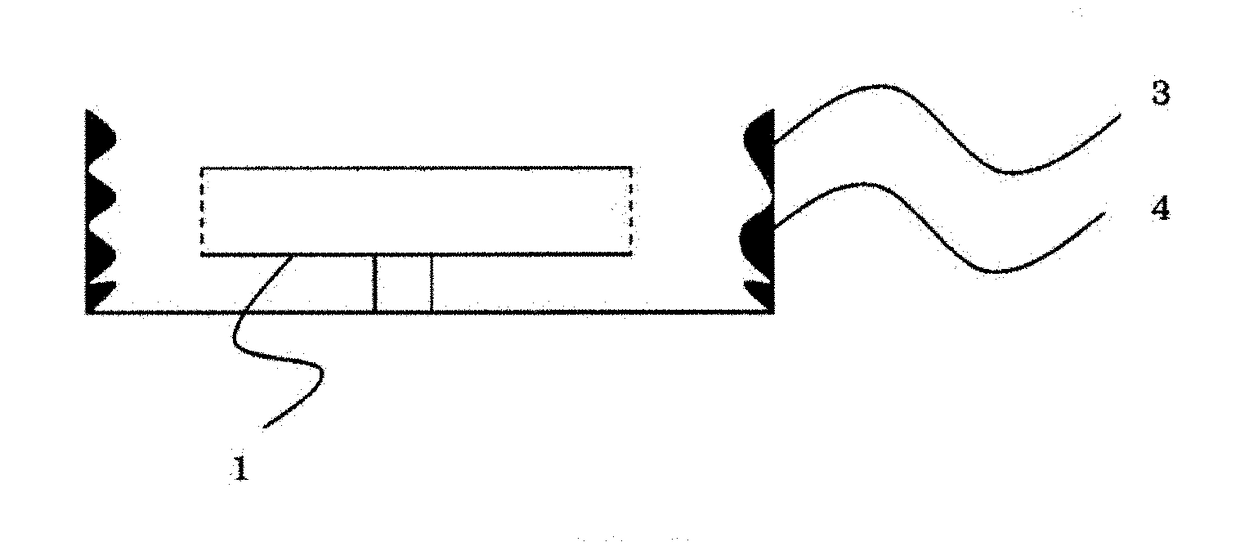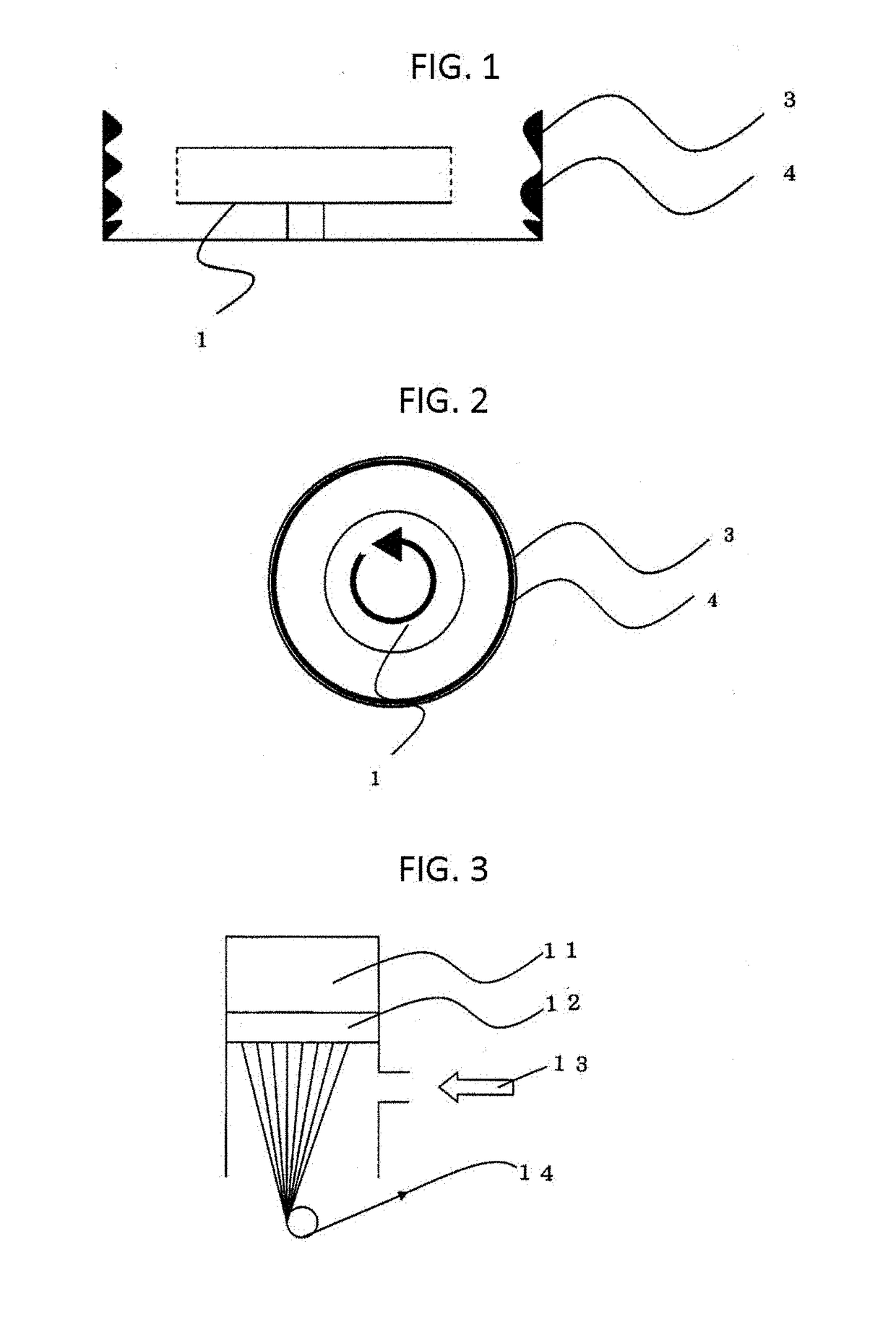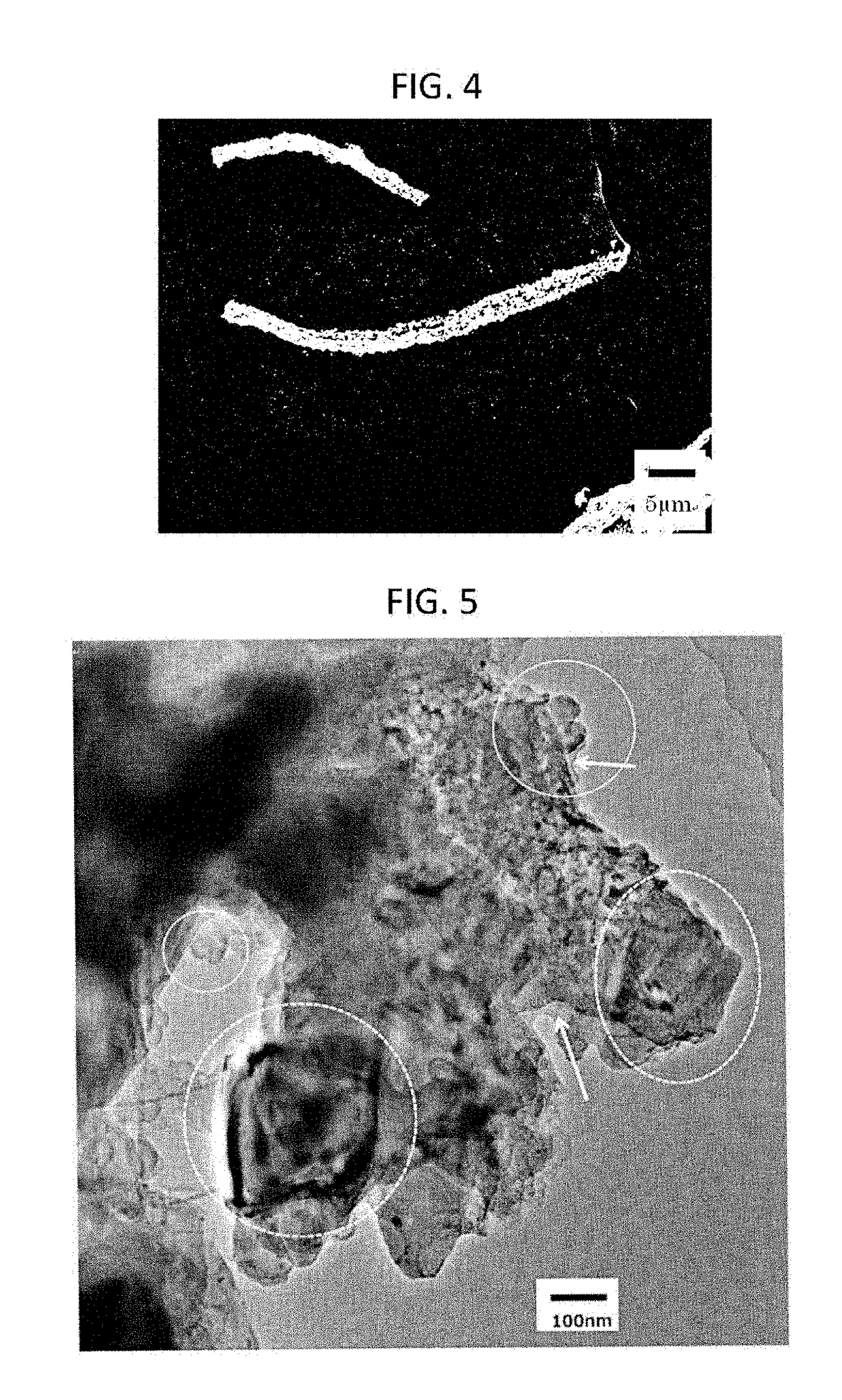Carbon-silicon composite material, negative electrode, secondary battery, and carbon-silicon composite material producing method
- Summary
- Abstract
- Description
- Claims
- Application Information
AI Technical Summary
Benefits of technology
Problems solved by technology
Method used
Image
Examples
example 1
[0157]PVA (product name: POVAL 224, saponification degree: 88 mol %, polymerization degree: 2400, produced by KURARAY CO., LTD.) of 60 pts.mass, carbon black (primary particle size: 35 nm, iron: 1 ppm) of 5 pts.mass, metallic Si (average grain size: 0.4 μm, produced by: KINSEI MATEC CO., LTD.) of 35 pts.mass, and water of 500 pts.mass were mixed by means of a bead mill. A carbon black-metallic Si dispersing liquid (PVA was dissolved) could be obtained.
[0158]A centrifugal spinning apparatus (see, FIGS. 1 and 2, distance between nozzle and collector: 20 cm, disk spinning number: 10,000 rpm) was used. The dispersing liquid was used to perform spinning (dehydration) by means of the centrifugal spinning apparatus. A nonwoven fabric (C—Si composite material precursor) was formed on a collection plate.
[0159]The obtained nonwoven fabric was heated (800° C., 1 hour, in a reducing atmosphere).
[0160]The obtained nonwoven fabric (C—Si composite material) was processed by using a mixer. Accordin...
example 2
[0168]Example 2 was performed in a manner similar to that performed in Example 1 except that PVA (saponification degree: 98 mol %, polymerization degree: 2400) of 60 pts.mass, carbon black (primary particle size: 50 nm), and metallic Si (average grain size: 2 μm) were used. A C—Si composite material similar to that obtained in Example 1 could be obtained. The C—Si composite material obtained in the present example was a fiber shaped C—Si composite material (diameter: 5 μm, length: 55 μm). Other characteristics are shown in Table-1.
example 3
[0169]Example 3 was performed in a manner similar to that performed in Example 1 except that carbon black (primary particle size: 35 nm) of 32 pts.mass and metallic Si (average grain size: 0.1 μm) of 8 pts.mass were used. A C—Si composite material similar to that obtained in Example 1 could be obtained. The C—Si composite material obtained in the present example was a fiber shaped C—Si composite material (diameter: 0.5 μm, length: 5 μm). Other characteristics are shown in Table-1.
PUM
| Property | Measurement | Unit |
|---|---|---|
| Grain size | aaaaa | aaaaa |
| Percent by mass | aaaaa | aaaaa |
| Percent by mass | aaaaa | aaaaa |
Abstract
Description
Claims
Application Information
 Login to View More
Login to View More - R&D
- Intellectual Property
- Life Sciences
- Materials
- Tech Scout
- Unparalleled Data Quality
- Higher Quality Content
- 60% Fewer Hallucinations
Browse by: Latest US Patents, China's latest patents, Technical Efficacy Thesaurus, Application Domain, Technology Topic, Popular Technical Reports.
© 2025 PatSnap. All rights reserved.Legal|Privacy policy|Modern Slavery Act Transparency Statement|Sitemap|About US| Contact US: help@patsnap.com



